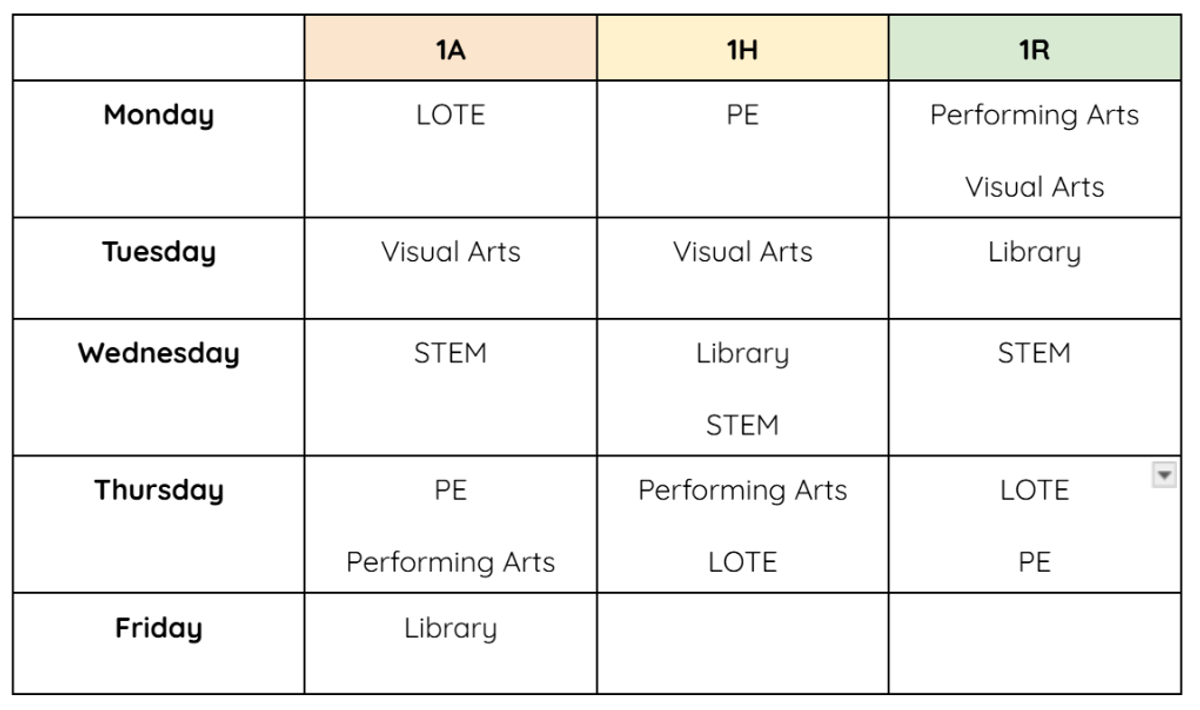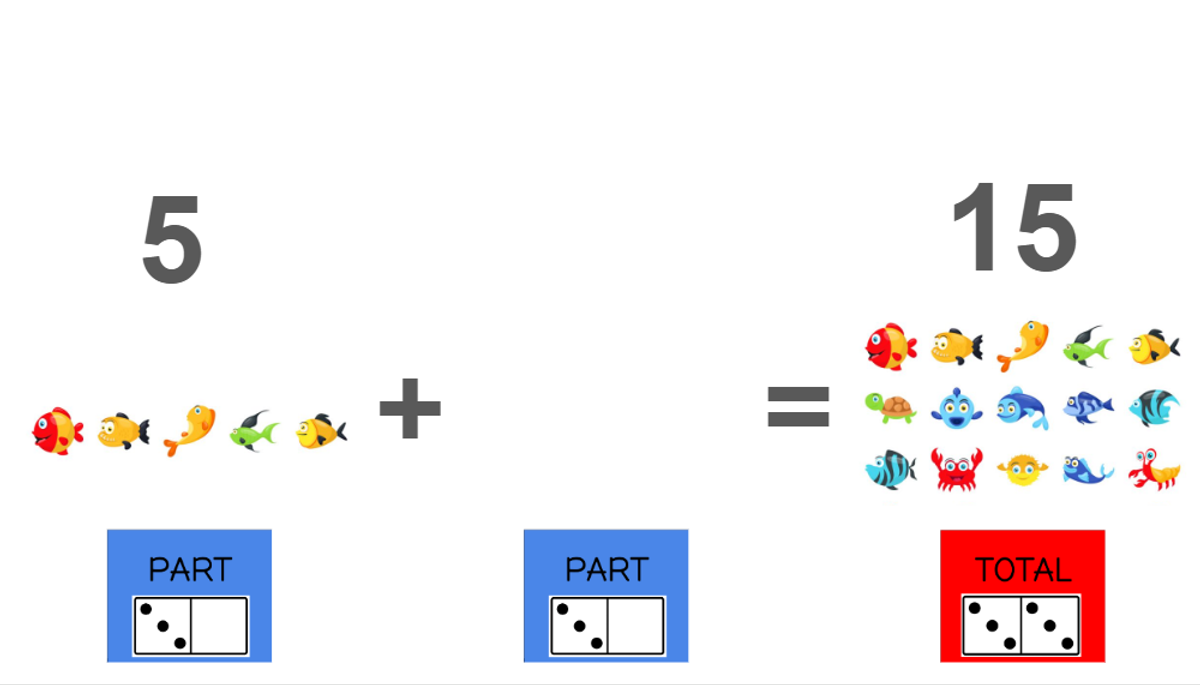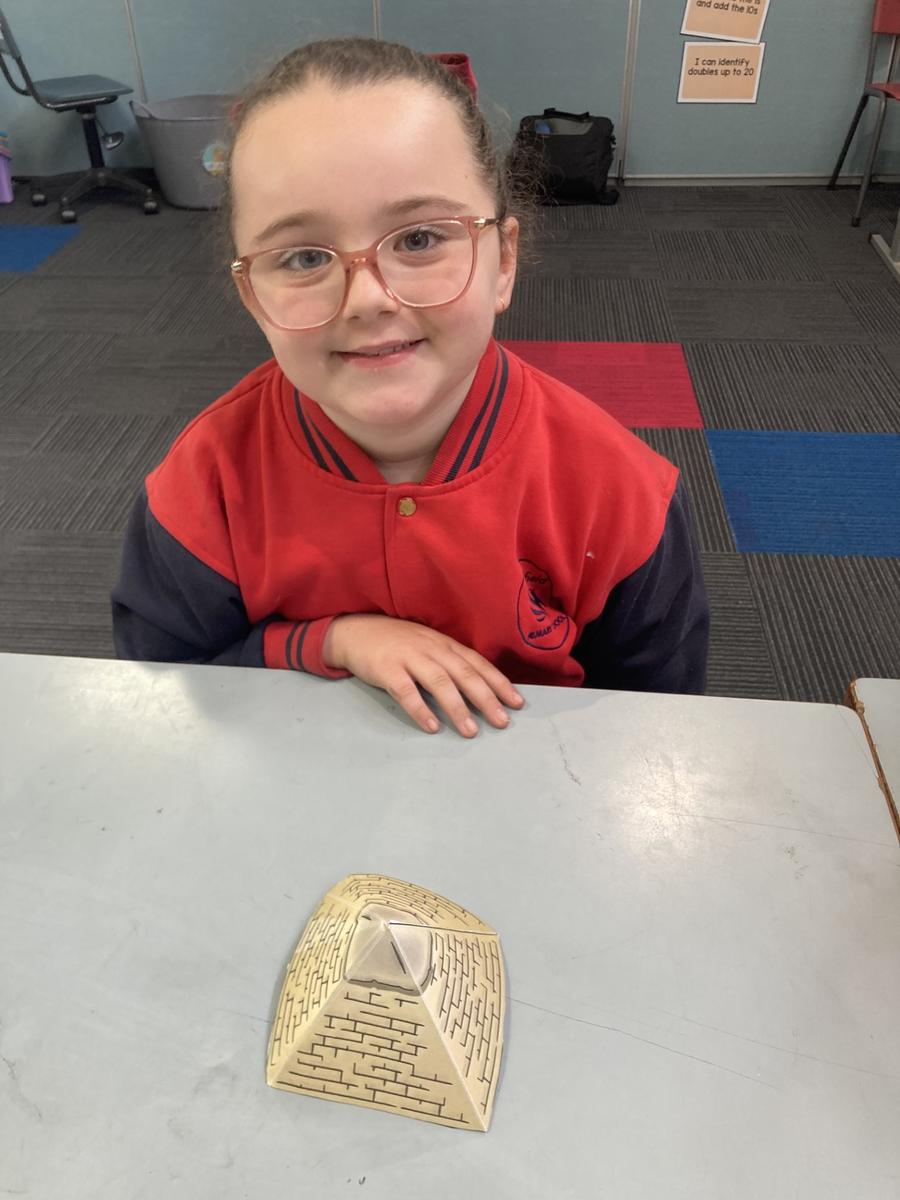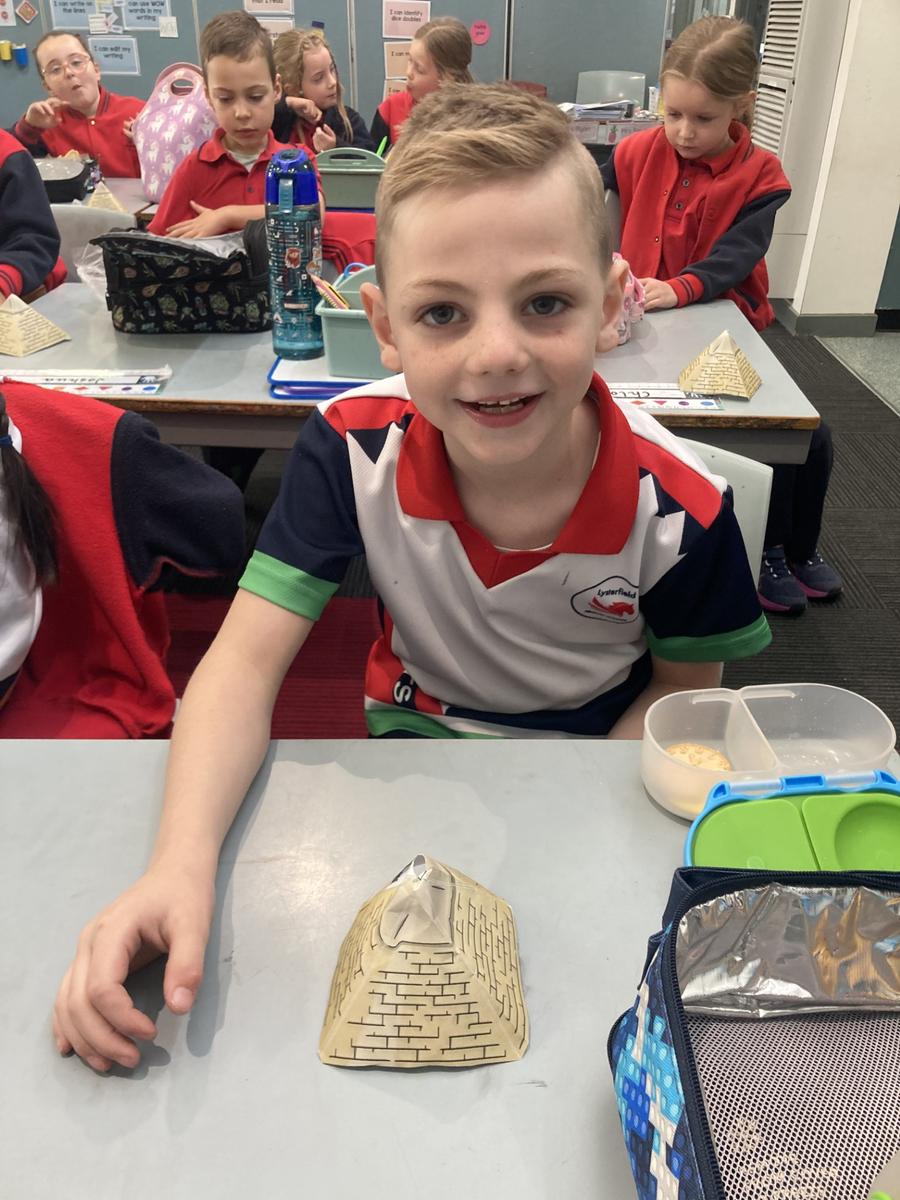Grade 1 News

Important Reminders
All important dates and events are on our Compass Calendar, please check the calendar regularly to stay up to date!
A few upcoming dates
Monday, June 9: Monarch’s Birthday - Public Holiday
Thursday, July 3: Cultural Day
Friday, July 4: Last Day Term 2 - 2.30pm finish
Production dates:
Tuesday 2nd September
Wednesday 3rd September
Library
Please refer to the timetable below of which shows what day each class is going to the library. Please ensure your child has their library bag so they can borrow weekly.
Please remember to send your child's take-home folder to school each day.
Homework
For homework in Grade 1 the expectation is that students will read their take-home book to an adult each day. Every student will receive a new book from their classroom on a Monday. Students will need to return their previous book before receiving a new book.
Here are some optional activities:
Learning in Action
Literacy
Over the last fortnight of Term 2 students have been busy within the Literacy space.
Word Work
Students have been learning how to read and spell words and sentences that have the ‘air’ and ‘ear’ trigraphs. The two sounds that the vowel trigraph 'ear' can make are /ear/ as in dear, near and hear. The second sound that it can make is /air/ as in pear, wear and bear. The 'air' trigraph (the combination of letters 'a', 'i', and 'r') creates the sound 'air', as in the words 'chair', 'hair, and 'fair'. When these three letters are together, they produce a single, distinct sound that is similar to how the word 'air' is pronounced.
Students have also been learning about the ‘oo’, ‘ou’ and ‘ow’ digraphs, transferring that knowledge into their spelling and writing.
Sentence Level Writing
Students have been learning to complete sentences when given a sentence stem with the conjunctions ‘before’ or ‘after’. By utilising subordinate conjunctions students can demonstrate the relationship between the two clauses, like a cause and effect or a time relationship. For example, ‘before you go to bed, you will brush your teeth’ and ‘after you wash your hands, you can eat your lunch’.
Students have also learnt how to begin and complete sentences using the subordinate conjunctions, ‘if’ and ‘when’. Here are some examples of how 1R students responded, either orally or written:
“If the whale opens its mouth, it will swallow lots of water” - Millie
“If he gets burnt, he will be really sore” - Aurora
“When the whale opens its mouth, it will accidentally swallow the diver” - Levi
“When he gets burnt, he will need special cream” - Raffy
Handwriting
Students have been revising previously learnt and practising both the lowercase and uppercase version of the following letters:
| Tt, Ll, Kk, Bb, Hh, Dd, Ff |
Preview
Grade 1s will continue with their Knowledge Rich Unit - Continents, Countries and Maps.
They will learn new sounds (digraphs, trigraphs) and practise previous sounds in Word Work such as:
- air, ear
- oo
- ou, ow
Student will practise the following skills in sentence level writing:
- Continue to revisit and review previously learnt concepts across the week, fortnight, month, and term. This ultimately allows students to move this knowledge into their long term memory.
Complete sentences when provided with a sentence stem containing subordinate conjunctions.
Students will also continue to practise their handwriting skills.
Numeracy
Addition
During the first half of the term, our Grade 1 students have been developing a strong understanding of addition through a variety of activities and real-life contexts. Here's a summary of the key concepts we’ve been focusing on:
- Addition is putting parts together to make a total Students have explored the idea that when we add, we are joining groups or quantities to find out how many we have altogether. This has been practised using physical objects, drawings, and visual models.
- The equals sign (=) means ‘the same as’ We’ve been learning that the equals sign isn’t just where the answer goes—it shows that both sides of a number sentence are balanced or the same. For example, 3 + 2 = 5 means that the total on both sides is equal.
- Numbers can be added in any order Students have discovered that in addition, the order of the numbers doesn’t change the total. Whether we write 4 + 5 or 5 + 4, the answer is always 9. This understanding helps build flexibility with numbers and mental strategies.
- Addition number sentences can describe real situations We’ve connected addition to everyday experiences through number stories. For example, “I had 2 apples and picked 3 more. Now I have 5.” This helps students see how maths is useful and meaningful in the world around them.
We’re proud of the way students have engaged with these concepts and are building confidence in their mathematical thinking.
Location and Transformation
Over the past few weeks, our Grade 1 classes have been exploring the world of location and movement through our Location and Transformation unit. This has been a fun and interactive part of our numeracy learning, where students have developed spatial awareness and directional language through movement and problem-solving tasks.
Here’s what we’ve been focusing on:
- Understanding positional language Students learned to use words that describe where objects are located and how they move. This included terms like near, next to, underneath, inside, outside, in front, behind, below, above, left, right, forwards, backwards, clockwise, and anticlockwise.
- Describing the position of objects Students practised describing where objects were placed using accurate spatial language.
- Following a series of instructions that involve turns Through activities like movement games, and giving directions to a partner, students followed and gave instructions involving directions such as left, right, clockwise, and anticlockwise.
These lessons have helped students build their ability to give and follow directions, communicate clearly, and visualise movement—skills that are useful not just in maths, but in everyday life.
Preview for Learning: Starting from next week we will begin our unit on Subtraction. Students will be learning a variety of strategies to assist them when solving subtraction problems and will practise the strategies most relevant to them during goal practice time. We will also be beginning our unit on Mass and Capacity.
Knowledge Rich
Students have continued to immerse themselves in the Knowledge Rich Unit, ‘Continents, Countries and Maps’. This past fortnight, students have been building their understanding of the following:
- The 7 continents in the World
- Understanding of the role of the equator and the northern and southern hemispheres
- Key landmarks within Australia
- Australian states, capital cities and native animals)
Following a similar structure, students have also explored the continent of Asia (continent itself, countries, cities, native animals), Europe, Africa, North America, South America and Antarctica.
Students have enjoyed completing different activities when learning about the different continents.
Wellbeing
Over the past fortnight, students have continued to learn about emotional literacy. We focused on acts of friendship where they identified emotions in others and suggested ways to help others. We then shared stories about acts of kindness and students reflected on times they have shown an act of kindness and suggested emotions that others might feel when people show kindness to them. Students drew a picture and wrote a small caption about their picture. They then shared this with their classmates.
Next week, we will begin a focus on personal strengths where students identify personal strengths and explain how these strengths contribute to family and school life.
From the Grade 1 teachers,
Ms Holmes, Miss Albanese, Mrs Reynolds and Mrs Ryan
Updates from around the school
Green Team News:
Under the guidance of Mrs Stokol and Mrs Alexander, the Green Team met for the first time this week. What a meeting it was! All up across years 3-5 we have close to 50 very excited and passionate students wanting to do their part. Whether it’s helping to keep the school free of rubbish, looking after and developing the plants gardens, educating the school community about sustainability, there was a buzz in the air as students shared their ideas and signed up for roles. A new initiative we’ve introduced this term is the collection of 10c containers. The special lunch day during last term raised $21. We look forward to saving these containers on a daily basis from going to landfill and turning them into cash. Money raised will be invested back into Green Team initiatives.
Involvement in the Green Team is all inclusive. It’s not too late for your child to get involved should they wish.







